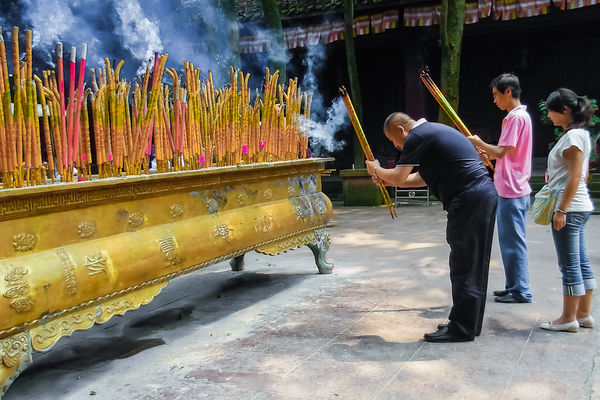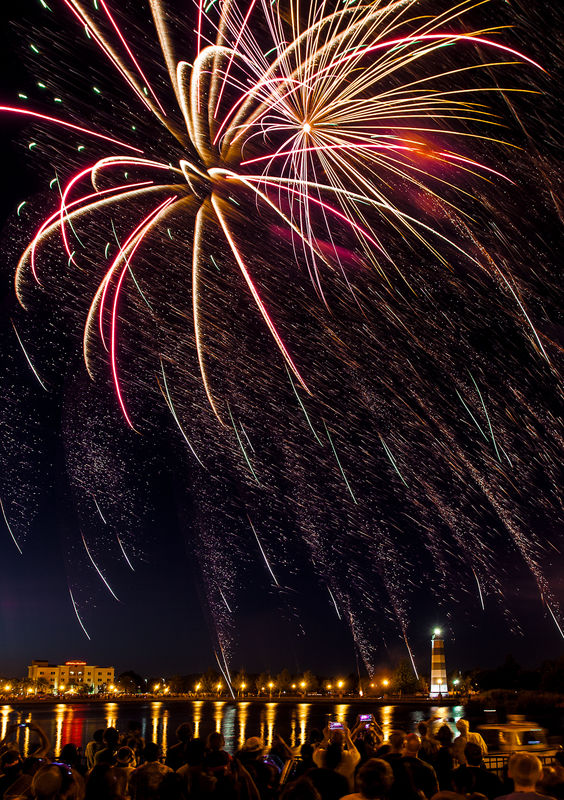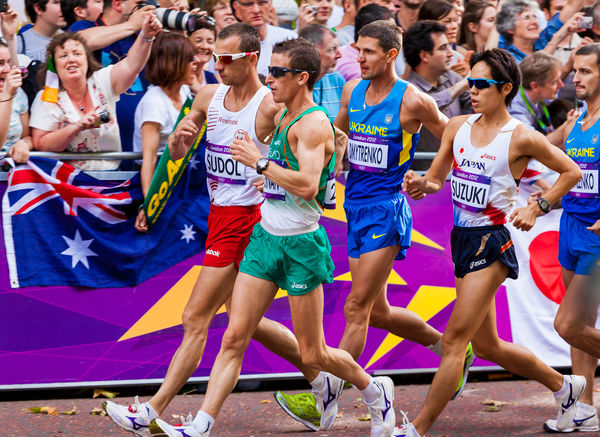How do I get my pictures like the pro's and top amateurs?
Aug 24, 2014 16:46:24 #
tsilva wrote:
It is a combination of things. First finding an in... (show quote)
Thanks tsilva! I need to keep shooting!
Aug 24, 2014 16:48:26 #
amehta
Loc: Boston
Greenguy33 wrote:
I look at professionals and top amateurs photo's and see sharp images with almost a 3d image, with separation between objects.
Is it all about the lighting? I know it can't be the equipment, because some of the images are from similar camera's.
Is it all about the lighting? I know it can't be the equipment, because some of the images are from similar camera's.
Everything goes in the mix: photographer, camera, lens, subject, light, post processing. If any are significantly weaker than the others, they should be "upgraded" to match the rest for the most effective results.
Aug 24, 2014 16:50:09 #
amehta wrote:
Everything goes in the mix: photographer, camera, lens, subject, light, post processing. If any are significantly weaker than the others, they should be "upgraded" to match the rest for the most effective results.
So true amehta!
Aug 24, 2014 16:54:03 #
Tony Britton
Loc: California
Greenguy33 wrote:
I look at professionals and top amateurs photo's and see sharp images with almost a 3d image, with separation between objects.
Is it all about the lighting? I know it can't be the equipment, because some of the images are from similar camera's.
Is it all about the lighting? I know it can't be the equipment, because some of the images are from similar camera's.
Hello,
While we don't own similar cameras, I've just posted a link here on this website that may provide some insights and general advice that might prove helpful.
http://www.uglyhedgehog.com/t-238650-1.html
My best advice is to develop or emulate a "style" of photography you appreciate and enjoy and by doing so, you'll have a definite game plan each time you use your camera and through practice you'll allow yourself to continually refine the process and steadily improve your skills.
Best regards,
Tony
http://www.tonybritton.smugmug.com/
Aug 24, 2014 16:56:25 #
Tony Britton
Loc: California
PalePictures wrote:
Trust me on this. br It doesn't come out of the ca... (show quote)
Bravo! Well said and I couldn't agree more!
Take care,
Tony
http://www.tonybritton.smugmug.com/
Aug 24, 2014 17:16:11 #
10MPlayer wrote:
No pro or top amateur here but I have to disagree ... (show quote)
I hope you keep believing that. The world has enough world class image producers. Their is little room at the top for anyone who is a prisoner of their thoughts.
The finest image producers in the world are on 500px.com. I don't know of one that does not make extensive use of post processing.
Not one.
Tim Tadder actually builds his images in post. He is the highest paid commercial photographer in the world! He has budgets that rival movie productions.
Luke Fontana portraits looks natural but they're not.
I wouldn't say anyone of the photographers correct their images in post. They enhance their images. This is where people get tripped up. They enhance their images not correct them. Contrast and depth can be added in a number of ways. How contrast is added in post is one of the primary factors in determining style. I actually remove much of my contrast in camera raw so I can add the contrast I want back in with photoshop. Contrast is easily added in post it is very difficult to remove.
You think this image is sharp because of the lens I used? I don't use a prime lens most of the time and it's never because it's sharper than my prime. I use a prime only for low light or to better control Depth of Field.(it's a 85 1.2)
Adding contrast to an image via sharpening is many times bad. Sharpened images can look grainy bordering on metallic. There are so many ways(in post)to add contrast in an image to create depth you could fill an entire thread on that discussion alone.
I always recommend for people to look at the images of the little or no post processing crowd. The ones that say you can get great images right out of the camera. I have never seen anyone that looks at their images and goes a Wow. At least not if you've been looking at the popular category or editors choice images on 500px.com. Those images are what I consider world class.
PP can be Used for cleaning up an image.
Pp can be used for fixing an image.
Pp can be used for enhancing an image.
The idea is to do a minimum of the first two and to maximize the last one.

Aug 24, 2014 18:28:53 #
Shoot with a clear vision of what you want the resulting image to look like, and what you want to express. Simply aiming the camera at an interesting subject and hitting the shutter button is not enough - you will likely just end up with mostly flat, uninspiring photos. The essence of good photography is the controlled manipulation of light and shadows. Pay attention to how the light falls on objects, and how the shadows give objects a sense of dimension. Move around the subject and find an angle that brings out that which you want to emphasize in the photo. What is and is not within the composition is also very important.
Aug 24, 2014 18:34:19 #
A classic case of natural light portraiture that you can never do with the camera only. This image was enhanced extensively in post. Contrast via luminance and color in post.
http://500px.com/photo/80839563/sweet-alex-by-katie-andelman-garner?from=user
http://500px.com/photo/80839563/sweet-alex-by-katie-andelman-garner?from=user
Aug 24, 2014 19:48:05 #
Greenguy33 wrote:
I look at professionals and top amateurs photo's and see sharp images with almost a 3d image, with separation between objects.
Is it all about the lighting? I know it can't be the equipment, because some of the images are from similar camera's.
Is it all about the lighting? I know it can't be the equipment, because some of the images are from similar camera's.
Guy, welcome to the Hog.
I'm not even sure what "3D look" means, or "separation", for that matter. Maybe you could find a sample and post it, so that we can actually see what you are describing. Sounds like something we should all be aspiring to achieve.
Let me ask you a different questions. A problem is that photography is NOT quantifiable. If this where a sports forum and you came on and asked," how long will it take me to dunk like Michael Jordon or hit a ball like Bonds", what do you think the answers would be??
From Leibovitz to HBC, all had extensive art/photography training. And just like sports, there is also natural talent involved. I don't bring that up as a discouragement, but as a possible path to follow that has worked for some of the best known photographers. Not even close to all are trained, but it can certainly help put you on the patch to creating the kinds of images that you want to produce, under the experienced and watchful eye of a professional!
I've heard a lot about gear, but nobody has mentioned anything about composition. Are we born natural composers, or do we need to be taught? Or maybe it's a little bit of all of the above.
I'm posting a few of my humble shots. They are probably not 3D, but they are certainly a combination of all that I have mentioned.
I have my own philosophies about how to build a shot and compose it. These three shots, though very different, all have the same things in common
Guy, I'm always glad to help if I can. ;-)
SS
Aug 24, 2014 20:29:57 #
PalePictures wrote:
The finest image producers in the world are on 500px.com. I don't know of one that does not make extensive use of post processing.
The finest image producers in the world are on 500px.com. I don't know of one that does not make extensive use of post processing.
I guess "image producers" is one way of referring to what is commonly seen on that site because they sure are not photos.
The stuff there has more artwork done on them then there is on the ceiling of the Sistine Chapel.
Aug 24, 2014 23:32:38 #
Swamp Gator wrote:
I guess "image producers" is one way of referring to what is commonly seen on that site because they sure are not photos.
The stuff there has more artwork done on them then there is on the ceiling of the Sistine Chapel.
The stuff there has more artwork done on them then there is on the ceiling of the Sistine Chapel.
Fortunately or unfortunately depending on who you are,judging of today's images on the web is based on the quality of the image, how you came about getting that image matters very little. Most of the people that complain about 500px produce images that just won't score there. Image enhancement is the wave of the future. The camera is only one tool in creating that image.
Viewbug, the largest photo contest sight on the internet, specifically states that post processing is allowed on virtually all their photo contest. Photos that would make national geographic just a few years ago cannot compete under the new rules of world class imagery. The boat is sailing we either get on board or get left behind.
I answered the question in this thread from a portraiture perspective of photography.
Three portrait photographers in my area control 90 percent of the portrait market here. The depth and contrast in their portraits are all created with extensive post processing. So yea I would say its art. The images approach the quality of many of the high scoring images on 500px. A person with little skill in PP would have little chance of penetrating the portrait market here.
Even from a landscape perspective I see the same thing. I think the real question to ask maybe how far do we go in processing an image.
What I have found about 500px is this:
Images that go to far in processing have their scores drop dramatically.
Images that don't go far enough may not score either.
There is a sweet spot in processing a quality photograph. If you are able to score in the high 90's on 500px you're in the zone.
The base image still has to be good.
I use the scoring of my own images as a self check.
Egos run high in the world of art and photography, without a score it easy to become a legend in our own minds. The score will keep the best photographers in check.
I have a three phase process for evaluating my own quality.
1) 500px score for general photographer appeal.
2) viewbug awards -- for how some of the best photographers in the world view my images.
3) commercial sales for commercial work.
I don't consider published works( and I have a lot of web verifiable ones) in the mix of evaluating my images.
One other note about 500px. There is ultimately about 50 -100 world class photographers/ image producers there. Most all of them consistently score in the mid to high 90's on all their images. I have had people say that some make the grade based on their friend network there. Honestly I have found that not to be the case. Some photographers/ artist score consistently in the high 90's and follow no one. From what I have observed there is a reality of what a world class image is, even if we fail to acknowledge that reality.
Objectivism like Gravity can be a bitch.
Aug 25, 2014 02:19:22 #
there is a camera bug that bites some of us, it's bite separates the photographers from the picture takers. It causes some of us to hit the books get out there with our cameras. if we develop our skills and also discover we have a photographers EYE then we are on our way.
Aug 25, 2014 05:46:17 #
Patience isn't my strongest attribute. :?[/quote]
I think that's the first thing to change - and perhaps also the hardest!
I think that's the first thing to change - and perhaps also the hardest!
Aug 25, 2014 06:03:09 #
Greenguy33 wrote:
I look at professionals and top amateurs photo's and see sharp images with almost a 3d image, with separation between objects.
Is it all about the lighting? I know it can't be the equipment, because some of the images are from similar camera's.
Is it all about the lighting? I know it can't be the equipment, because some of the images are from similar camera's.
Learning to be critical and self-critical, and the language to communcate what you see in a photo.
Describing an image as "3D" with "separation between objects" can be vague, though I am pretty sure I know what you are referring to.
Three dimensionality and "Separation between objects" (as in subject being focused on is sharp, and separate from background and foreground) - does have a lot to do with equipment, but it is also technique. Using short distance between subject and background, a long lens with a large aperture (F2.8 or faster), and impeccable technique in focusing, tracking, and keeping your compositions tight while shooting will all combine to make really great shots. It is easier to do with a full-frame camera, but I have seen good results with smaller sensors.
Your reference to lighting is a good observation, but WHAT is it about the lighting that is different in the images you provided as examples? It is a good time to learn how to "deconstruct" an image to try and understand all the elements that constitute the image, and why it looks the way it does.
A great way to get a better grip on this is to work with a photographer whose working you like to get his/her critique of your work.
Aug 25, 2014 06:19:42 #
Greenguy33 wrote:
I look at professionals and top amateurs photo's and see sharp images with almost a 3d image, with separation between objects.
Is it all about the lighting? I know it can't be the equipment, because some of the images are from similar camera's.
Is it all about the lighting? I know it can't be the equipment, because some of the images are from similar camera's.
Hi everyone, I am pretty new to the Hogs. Greenguy, I started getting into photography about 15 months ago and have spent most of my free time learning about it. I have a Nikon D3100 and I use Lightroom. I spent a better part of a year learning Lightroom and the Camera (plus an SB-700 flash). I read everything I could on photography. I did start to see improvements in my photos but they were not that professional quality you talk about. In the last 3 months I have been applying all I learned out in the field taking lots of pictures. Experiment, Experiment, Experiment!! Now I am starting to get some professional quality photos. My advice is don't spent so much time in manuals and E-books, etc, get out there and shoot with the equipment you have and learn it in the field. I wanted to get the D7100 right away but decided to wait until I really knew the D3100. Best decision I ever made.
If you want to reply, then register here. Registration is free and your account is created instantly, so you can post right away.










